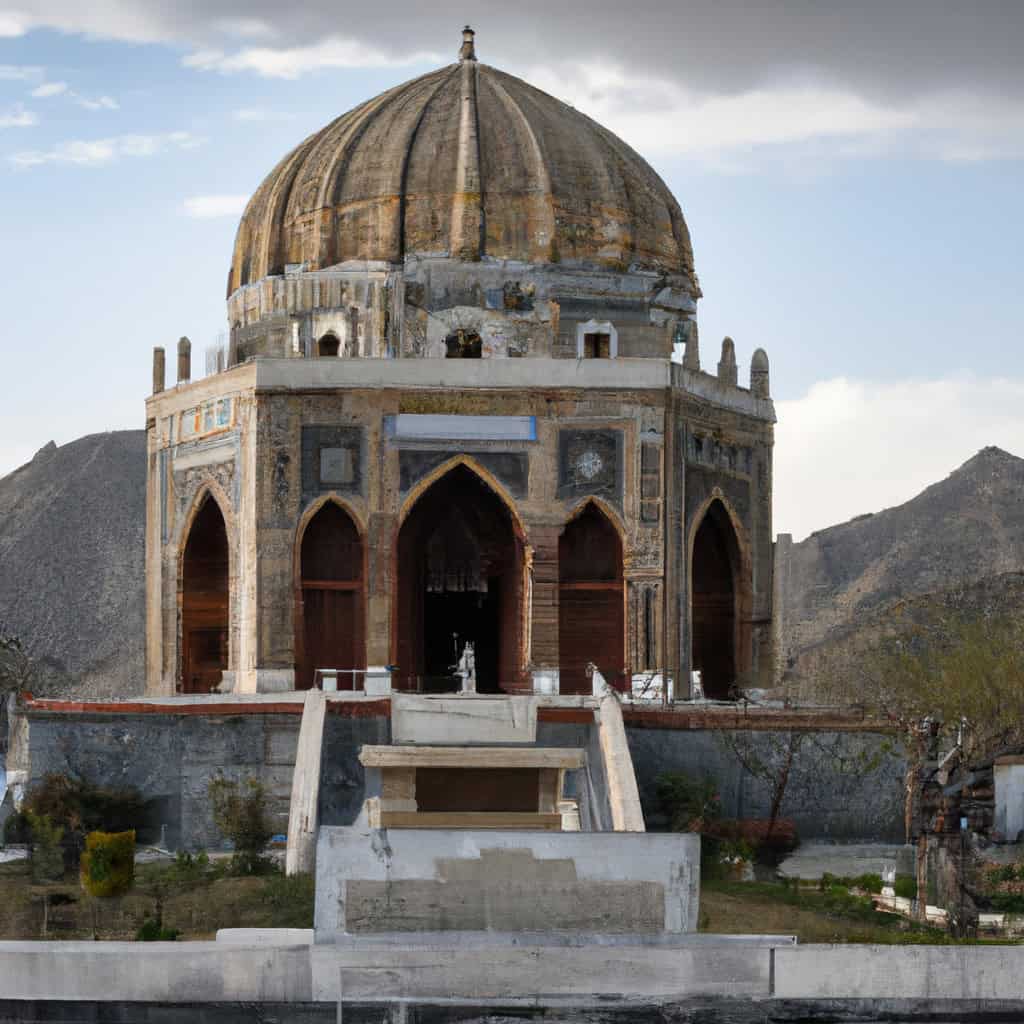Timur Shah Mausoleum in Kabul, is one of many fascinating sites that both foreign visitors and local tourists can explore while they visit Afghanistan and exploring Kabul Province. This grand edifice, nestled in the vibrant heart of Kabul, stands as an enduring testament to Afghanistan’s rich and storied past. Largely influenced by Persian architecture, the Mausoleum serves as the final resting place of Timur Shah Durrani, the second ruler of the Durrani empire and a significant figure in Afghanistan’s history. His reign, which spanned from 1772 to 1793, marked an era of considerable architectural development and cultural expansion in the region.
Timur Shah Mausoleum Most Important Events
- Crowning of Timur Shah: One of the most significant historical moments at the Timur Shah Mausoleum was the crowning of Timur Shah himself. It was this moment that initiated the Durrani rule under his leadership and changed the face of Afghan history.
- The Relocation of the Capital: Another crucial event was Timur Shah’s decision to shift the capital from Kandahar to Kabul. This move significantly shaped the region’s history and set Kabul as an influential centre of power, culture, and development.
- Restoration of the Mausoleum: A significant development that added to the legacy of this mausoleum was the extensive restoration project undertaken by the Aga Khan Trust for Culture in the early 21st century. This initiative preserved the edifice’s historical integrity whilst ensuring its survival for future generations to explore and appreciate.
History of Timur Shah Mausoleum in Kabul
Timur Shah’s reign signalled a time of increased prosperity and expansion for Afghanistan. He chose Kabul as the capital due to its strategic location, favourable climate and its potential to flourish as a cultural hub. During his time, he patronised numerous building projects, including the construction of the Mausoleum, which contains around 16 graves including that of Timur Shah’s.
Despite its rich history, the mausoleum experienced periods of neglect and disrepair in the subsequent centuries. Like many historical monuments in the region, the tumultuous chapters of Afghan history have left scars on the building’s façade. However, the resilience of this structure is testament to its robust Persian influenced architecture.
In the early 21st century, the Aga Khan Trust for Culture undertook a restoration project to preserve the historical monument. The restoration breathed life back into the structure, showcasing its architectural beauty and historical significance. Today, it stands as an emblem of Kabul’s cityscape and history, attracting history buffs and casual tourists alike.
Why It’s Important to Afghan History
Timur Shah Mausoleum is a precious link to Afghanistan’s past. It is not merely a burial place of a once powerful king; it is a treasury of historical events and cultural junctions. The Mausoleum reminds us of Afghanistan’s enduring identity and the cultural prowess of Timur Shah’s era.
Moreover, the Mausoleum played a pivotal role in shaping the face of modern Kabul as we know it today. The fact that Timur Shah chose this location to build his final resting place indicates the historical and cultural weight Kabul held during his reign.
Why to Visit Timur Shah Mausoleum
The Timur Shah Mausoleum is a mesmerising blend of history and architecture. Exploring the Mausoleum isn’t just about witnessing a historical monument; it’s about immersing oneself in a journey through time. Each pillar, wall, and corridor speaks volumes of a time when kings and empires reigned supreme.
Furthermore, the Mausoleum is enveloped by a serene park, where locals and tourists alike find solace amidst the hustle and bustle of city life. It’s an unmissable destination for anyone seeking a deeper understanding of Kabul and Afghanistan’s vibrant history.
- Persian-Inspired Architecture
- Serene Surrounding Park
- Riveting Historical Insights
- in the Heart of Kabul
- Accessible for all tourists
- The Mausoleum is nestled centrally in Kabul and is accessible from various points in the city. The site is open to visitors year-round, but veterans suggest visiting during late spring when Kabul is adorned with blooming flowers, creating a picturesque surrounding.
- Cultural & Tourist Significance
- Deeper than the intricate carvings and architectural merit is the cultural significance of the Mausoleum. It serves as a cultural cornerstone, offering visitors profound insights into the contextual history of Afghanistan. The Mausoleum is not just a site of reverence for the locals; it’s a beating heart of cultural identity.
- Moreover, the Mausoleum acts as an impressive backdrop to the bustling Kabul Riverfront revitalised by the Aga Khan Development Network. This gem of a place is a tangible link to Afghanistan’s past that the locals are proud of, making it a must-visit site for travellers worldwide.
- Finally, the role of the Mausoleum as a majestic relic has significantly contributed to Kabul’s tourism sector. Its historical allure and architectural grandeur draw the attention of global travellers, making it a central feature on the city’s tourism landscape.
- Interesting Facts
- Owing to his affiliation for culture and arts, Timur Shah is known as the patron of the Persian language. It accentuates the fact that his Mausoleum is influenced by Persian architecture, making it a unique representation of the leader’s devotion.
- Furthermore, legend suggests that beneath the Mausoleum lies a labyrinth of passages, allegedly leading to the former royal court’s treasury. However, no explorations have confirmed such stories yet.
- Another surprising fact is that following years of neglect, the site was used as a vegetable market until the early 20th century. It was only until the Aga Khan Trust for Culture began the restorations project that the Mausoleum received the recognition it deserved.
- In conclusion, the Timur Shah Mausoleum is a powerful reminder of Afghanistan’s glorious past and presents a unique opportunity for visitors to delve into the richness of Afghan history and culture. It’s a must-visit site in Kabul, an architectural marvel that resonates with an intriguing narrative that stretches across the centuries.

